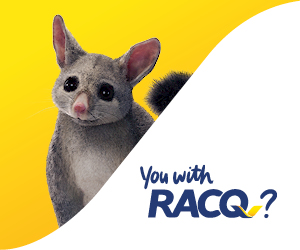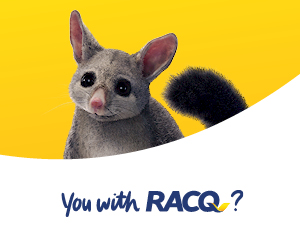Queensland is home to amazing national parks that attract thousands of local and international visitors each year.
However, one protected area stands out above all others in terms of its splendour, diversity of landscapes, and ongoing geomorphological processes.
The world's largest sand island, K’gari (formerly Fraser Island), lies off the coast of Hervey Bay in Queensland’s Wide Bay region.
The island’s traditional name of K’gari means ‘paradise’ to the Butchulla people, who have inhabited the island for thousands of years.
Its natural beauty includes magnificent stands of rainforest adapted to the sand environment, amazing sand cliffs and spectacular sand blows.
Central to the island’s attraction are the dingoes with many people visiting the island specifically to see them in the wild.
K’gari is home to up to 200 dingoes, depending on the pupping season.
Known by the Butchulla people as wongari, the dingoes are the island’s apex predators and they roam the rugged landscape from the beach to the rainforest.
As with all apex predators, there is a history of human-dingo conflict
Senior Ranger Dr Linda Behrendorff completed her PhD on the island’s dingo population and has been watching and studying them for more than two decades.
“Dingoes on K’gari are extremely intelligent and opportunistic,” Dr Behrendorff said.
“They are wild animals in their natural environment and that’s how they should be treated. Unfortunately, we find some visitors are treating them like domestic dogs.”
Dr Behrendorff said there were strict rules to help reduce the interactions and potential risk between people and dingoes.
“It is unlawful to interact with dingoes or deliberately or inadvertently feed them, and there are hefty fines in place for people who break the rules,” she said.
“We encourage people to move dingoes on if they are lingering around fishing or camping areas.
“We encourage fishers to keep their bait and catch out of reach and we ask all parents and carers to keep their children within arm’s reach.
“Dingoes can quickly become habituated if they’re fed and they will approach people for food or act aggressively.
“People do get bitten and our analysis of negative interactions shows around 65% of bite victims are children. That is why keeping them within arm’s reach is extremely important.”
Fenced camping areas cater for families with children and people who prefer to camp with facilities nearby.
QPWS rangers move between camps daily, providing ‘Be dingo-safe!’ messaging to all campers.
To help manage the risk from habituated dingoes, some are ear-tagged to assist with identification and monitoring.
High-risk animals may be fitted with tracking collars to assist in managing human influences around them.
“In 2023, from an estimated 400,000 visitors, we had 35 high-risk interactions between dingoes and people,” Dr Behrendorff said.
“That includes biting, mouthing or lunging at people.
'Many of those interactions resulted in minor injuries and involved dingoes that had become habituated, mainly because they had been fed or had access to food.
“That’s why we need all residents and visitors to the island to study the ‘Be dingo-safe!’ guidelines before they arrive and follow them closely during their stay.
"We want people to enjoy the breathtaking beauty of K’gari, the freedom of beach driving, exceptional fishing and camping under the stars.
“Your safety is our number one priority, but staying safe is your responsibility.”
In 2023, from an estimated 400,000 visitors, we had 35 high-risk interactions between dingoes and people
Since 2020, domestic visitation to the island has grown by 29%
In that time, more than 210,000 Vehicle Access Permits (VAPs are required to drive on the beach) were purchased for K’gari.
In the last financial year, more than 30% of all VAPs sold in Queensland were for K’gari. In 2023, 248,000 domestic tourists and 42,000 international visitors stayed at least one night in camping areas on the island.
The figure swells to more than 400,000 annual visitors when the island’s resorts and rental accommodation are taken into consideration.
One of Queensland’s most popular road trips, K’gari attracts four-wheel driving and camping enthusiasts from across the State and beyond.
K’gari contains half of the world's perched, freshwater dune lakes, which enhance the island’s stunning landscape.
The dunes are part of an ongoing geomorphological process, where sand from New South Wales and Queensland’s southern beaches drifts north on ocean currents and is deposited on K’gari.
The island falls under the authority of the Department of Environment, Science and Innovation, and is managed collaboratively by the Queensland Parks and Wildlife Service (QPWS) and Butchulla Aboriginal Corporation (BAC).
The QPWS manages dozens of camping areas where visitors can pitch their tents and enjoy getting back to nature for about $7 per person per night, while the island’s resorts and rental accommodation cater for people who don’t want to sleep with sand between their toes.
How to ‘be dingo-safe!’
- Always stay close (within arm’s reach) to children and young teenagers.
- Always walk in groups and carry a stick.
- Camp in fenced areas where possible.
- Do not run. Running or jogging can trigger a negative dingo interaction.
- Never feed dingoes.
- Lock up food stores and iceboxes (even on a boat).
- Never store food or food containers in tents.
- Secure all rubbish, fish and bait and fishing tackle.
- Avoid bush toileting.
Matt Watson is the Principal Media Officer with the Department of Environment, Science and Innovation.




